Past Talks
Establishing Smart and Resilient Lunar Habitats

June 19, 2024
external page Prof. Shirley Dyke
Purdue University, West Lafayette IN
The creation of safe and comfortable habitations is one of humankind’s oldest activities. Millennia of trials have brought the design and operation of habitats on Earth to a high degree of sophistication. However, as we consider moving out into Space, we will encounter challenges related to the harsh and unknown conditions that are present in this environment. These challenges will impede safety and thus, progress. Designing to withstand the demands that such extreme environments will place on long-term deep space habitats represents one of the greatest challenges in this undertaking, and is the main the know-how to establish deep space habitat systems that are smart and resilient.
We define SmartHabs as habitats that have the ability to sense, anticipate, respond to, and learn from disruptions. Resilience requires that we first develop approaches to selecting a system architecture with the right features to support resilience. However, system architecture alone is not sufficient, so we are working on techniques to extract the necessary amount of actionable information for repair and recovery through monitoring and embedded intelligence. The mission of the Resilient ExtraTerrestrial Habitats Institute (RETHi) is to provide situational awareness and autonomy to enable the design of habitats that are able to adapt, absorb and rapidly recover from expected and unexpected disruptions. Both fully virtual and coupled physical-virtual simulation capabilities are being established to enable us to explore a wide range of potential deep space SmartHab configurations and operating modes.
Professor Shirley Dyke holds a joint appointment in Mechanical Engineering and Civil Engineering at Purdue University. She is the Director of Purdue's Intelligent Infrastructure Systems Lab and the Director of the NASA-funded Resilient ExtraTerrestrial Habitat Institute. Her research focuses on “intelligent” structures, and her innovations encompass structural health monitoring and machine learning for structural damage assessment and reconnaissance support. She holds a B.S. in Aeronautical and Astronautical Engineering from the University of Illinois, Champaign-Urbana in 1991 and a Ph.D. in Civil Engineering from the University of Notre Dame in 1996. Dyke is the past Editor-in-Chief of the journal Engineering Structures. She was awarded the Presidential Early Career Award for Scientists and Engineers from NSF (1998), the George Housner Medal by ASCE (2022), the SHM Person of the Year Award (2021), the International Association on Structural Safety and Reliability Junior Research Award (2001) and the ANCRiSST Young Investigator Award (2006).
Dynamics and Topology Optimization of Soft Machines
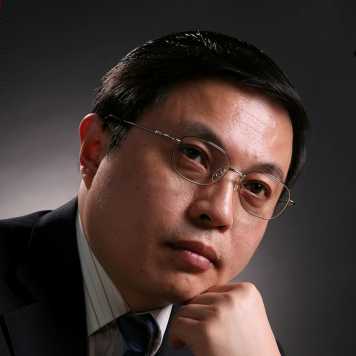
May 13, 2024
external page Prof. Haiyan Hu
Beijing Institute of Technology, China
Soft machine refers to a kind of advanced mechanical systems, such as a soft robot, a morphing airplane and a deployable space antenna. A soft machine usually consists of a number of soft components and joints so that the machine undergoes both overall motion and large deformation during operation. The coupling of overall motion and deformation is geometrically nonlinear, together with the physical nonlinearity of soft materials, makes the dynamics and design of the soft machine quite challenging.
The lecture presents how to model a soft machine in an inertial frame of reference so as to accurately describe the coupled overall motion and large deformation, how to efficiently compute the dynamics of a soft machine, and how to make the topology optimization of a soft machine. The lecture demonstrates these methods through soft robots and deployable space structures, as well as their experimental validations.
Dr. Haiyan Hu is Professor of Mechanics with Beijing Institute of Technology. He has made recognized contributions to the nonlinear dynamics of controlled systems, the deployment dynamics of large space structures, and the flutter control of aircraft structures. He received The State Award of Natural Sciences twice and some other honors, including Fellow of Chinese Academy of Sciences, Fellow of The World Academy of Sciences, Honorary Member of Hungary Academy of Sciences, Honorary Doctor of Moscow State University, and ASME Thomas Caughey Dynamics Award.
AI, ML, and Vision Algorithms for Structural System Identification and Integrity Assessment: Physics-Informed Models and Data-Driven Discovery
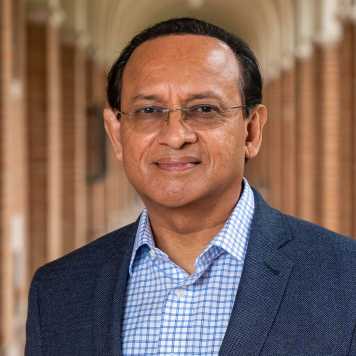
April 22, 2024
external page Prof. Satish Nagarajaiah
Rice University, Houston TX
This lecture introduces novel methods/algorithms to solve essential problems of sparse output-only identification, sparse input-output identification of nonlinear structures, and structural damage detection. These innovative methods utilize Artificial Intelligence, Machine Learning, and Computer Vision. The lecture also presents a new parametric algorithm capable of discovering the underlying governing equations of the system of interest from input-output data, thereby bridging the gap between data-driven discovery and physics-informed models. Furthermore, recently developed Computer Vision algorithms are described to demonstrate successful non-contact sensing, image processing, system identification, and damage detection. Finally, brief remarks describe computer vision and deep learning artificial intelligence techniques developed for non-contact strain sensing, crack, and damage detection.
Satish Nagarajaiah is a Professor of Civil Eng., Professor of Mechanical Eng., and Material Science Nano-Engineering (courtesy) at Rice University, Texas, USA. His teaching and research focus on structural dynamics, seismic isolation, adaptive negative-positive stiffness structural systems, structural control/monitoring, sparse structural system identification, physics-informed/guided machine learning, and noncontact strain sensing/mapping using nanomaterials. He has made pioneering contributions to the development of (1) algorithms for nonlinear dynamic analysis of seismically isolated structures that have been implemented widely in practice—one of the first being San Francisco International Airport, recently being in $5B Apple Headquarters building in California, (2) adaptive stiffness structural systems—particularly adaptive passive negative stiffness systems, (3) non-contact smart strain sensing skin made of carbon nanotubes for producing strain maps, and (4) widely cited sparse structural system identification with machine learning and computer vision algorithms. He serves as the senior editor of the Mechanical Systems and Signal Processing (MSSP) journal (2024-present) and as editor of the Structural Control and Health Monitoring journal (SCHM—Wiley, 2008-present). He served as the managing editor of the ASCE Journal of Structural Eng. (2011-2018). His outstanding contributions have been recognized by (1) the National Science Foundation CAREER award in 1999, (2) the Moissieff Award by ASCE in 2015, (3) Raymond Reese Research Prize by ASCE in 2017, (4) SCHM/IASCM Takuji Kobori Prize in 2019, and (5) prestigious Nathan M. Newmark Medal jointly by ASCE SEI & EMI in 2020. In recognition of his important inventions and pioneering contributions, Nagarajaiah was elected to the United States National Academy of Inventors (F.NAI) in 2019 and elected Distinguished Member of ASCE in 2021.
Adventures in Reduced Order Modeling

May 22, 2023
external page Prof. Earl H. Dowell
Duke University, Durham
Reduced order models (ROM) have captured the interest and effort of many investigators over the years. As is well known the cost of computation can easily outpace the available computational resources, especially for multidisciplinary mathematical/computational models. The presentation is a personal account of one investigator's journey, enabled by substantial contributions from colleagues in several organizations over the years. It is intended to be an account of key ideas as seen from a single perspective. By a reduced order model is meant a model that provides a substantial reduction in the size and cost of the original computational model without any essential loss in accuracy. And the motivation for creating such a ROM is not only to reduce computational cost. By extracting the essential elements of a more elaborate model, a much wider range of parameters in the model may be studied and the interpretation of the results may be made easier, thereby advancing our understanding of the model and the physical phenomena it is intended to describe.
Prof. Dowell research ranges over the topics of aeroelasticity, nonsteady aerodynamics, nonlinear dynamics and structures. In addition to being author of over three hundred research articles, Dr. Dowell is the author or co-author of four books, "Aeroelasticity of Plates and Shells", "A Modern Course in Aeroelasticity", "Studies in Nonlinear Aeroelasticity" and “Dynamics of Very High Dimensional Systems”. His teaching spans the disciplines of acoustics, aerodynamics, dynamics and structures.
Prof. Dowell received his B.S. degree from the University of Illinois and his S.M. and Sc.D. degrees from the Massachusetts Institute of Technology. Before coming to Duke as Dean of the School of Engineering, serving from 1983-1999, he taught at M.I.T. and Princeton. He has also worked with the Boeing Company.
He has served on the boards of visitors of several universities and is a consultant to government, industry and universities in science and technology policy and engineering education as well as on the topics of his research.
Prof. Dowell is an elected member of the National Academy of Engineering, an Honorary Fellow of the American Institute of Aeronautics and Astronautics (AIAA) and a Fellow of the American Academy of Mechanics and the American Society of Mechanical Engineers. He has also served as Vice President for Publications and member of the Executive Committee of the Board of Directors of the AIAA; as a member of the United States Air Force Scientific Advisory Board; the Air Force Studies Board, the Aerospace Science and Engineering Board and the Board on Army Science and Technology of the National Academies; the AGARD (NATO) advisory panel for aerospace engineering, as President of the American Academy of Mechanics, as Chair of the US National Committee on Theoretical and Applied Mechanics and as Chairman of the National Council of Deans of Engineering. From the AIAA he has received the Structure, Structural Dynamics and Materials Award, the Von Karman Lectureship the Crichlow Trust Prize and the Reed Aeronautics Award; from the ASME he has received the Spirit of St. Louis Medal, the Den Hartog Award and Lyapunov Medal; and he has also received the Guggenheim Medal which is awarded jointly by the AIAA, ASME, AHS and SAE.
No Equations, No Variables, No Space, No Time:
Data and the Modeling of Complex Dynamics
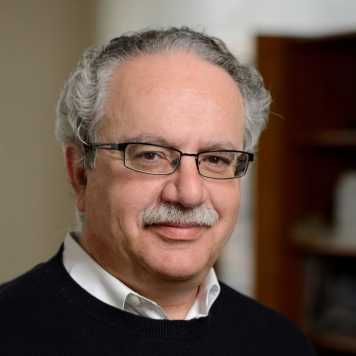
April 24, 2023
external page Prof. Yannis Kevrekidis
Johns Hopkins University, Whiting School of Engineering, Baltimore MD
This talk will touch on old and new results in the data driven modeling of complex dynamics: From neural odes and pdes in the 1990s, to emergent spaces, optimal algorithm discovery and data driven well-posedness today.
Yannis Kevrekidis, is the Bloomberg Distinguished Professor in the departments of Chemical and Biomolecular Engineering and Applied Mathematics and Statistics and in the School of Medicine’s Department of Urology, pioneered the approach known as “equation-free computation.” He is a member of the National Academy of Engineering. Kevrekidis’ research interests have always centered around the dynamic behavior of physical, chemical, and biological processes; the types of instabilities they exhibit; the patterns they form; and their computational study. More recently, he has developed an interest in multiscale computations and the modeling of complex systems. Along with several students and collaborators, he developed what he calls the “equation-free” approach to complex systems modeling, explored its capabilities in several areas, and is now working on linking it with modern data mining/machine learning techniques in what could be called an “equation-free and variable-free” approach. His work is interdisciplinary, with applications ranging from protein folding to electrochemistry and from reaction engineering to network theory. It also features components of high performance computing, and—in recent years—an increased data science and machine learning component. Kevrekidis’ work has been transforming the way scientists and engineers perform computer-assisted modeling of complex systems – both through new algorithmic techniques, and through targeted applications such as accelerated molecular dynamics, or nonlinear system identification.
Transient and Strongly Nonlinear: Dynamics Beyond Common Simplifications
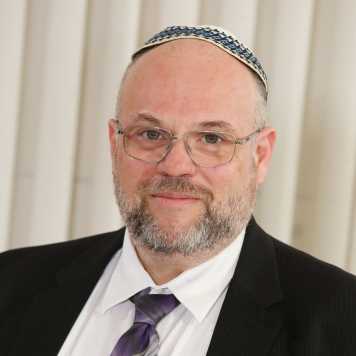
March 13, 2023
external page Prof. Oleg Gendelman
Technion - Israel Institute of Technology in Haifa
Nonlinear energy transfers are common in nature. Yet, nonlinearity has been traditionally perceived either as an unavoidable nuisance or as an unwelcome design restriction in engineering systems. Nowadays, however, this trend is reversing, with nonlinear phenomena being intensely studied in diverse disciplines. Furthermore, strong nonlinearity is now intentionally used and explored in a variety of mechanical and physical settings.
Current talk will address two examples of transient strongly nonlinear phenomena. The first one is a problem of escape from a potential well under narrow-band forcing. The setting itself is ubiquitous and exhibits certain typical quantitative features known for a long time. However, only recently a mathematical approach capable to cope with transient character of the process and strong nonlinearity and to predict/explain these typical features has been devised. It points on profound resonant underlying mechanisms of the efficient (or most dangerous) escape, despite uncommon dynamical settings.
The second problem addresses efficient strongly nonlinear energy transfers beyond the resonance, and present a novel approach towards passive vibration mitigation assisted by strongly nonlinear structural elements – intermodal targeted energy transfer (IMTET). Strong mitigation externally excited linear or weakly nonlinear primary systems with multiple degrees of freedom is achieved through targeted, efficient and controllable redistribution of mechanical energy among the modes. The redistribution is achieved by adding passive strongly nonlinear elements - not necessarily additional degrees of freedom – to the primary structure. These nonlinear elements provide strong intermodal coupling and interactions. As a result, many internal modes actively participate in the damping, even only one or very few modes are initially excited. Such energy redistribution can lead to drastic enhancement of the mitigation characteristics of the structure. Multiple numeric and experimental illustrations of the IMTET are discussed.
Born in Kharkov, Ukraine in 1969. Received the MSc degree in applied mathematics and physics from Moscow Institute of Physics and Technology in 1992, PhD (1995) and Doctor of Sciences (2000) degrees in mathematical and physical sciences - in the Institute of Chemical Physics in Moscow. Since 2003 with Faculty of Mechanical Engineering, Technion - Israel Institute of Technology in Haifa. Currently - chaired professor, in 2019-2022 – Dean of the Faculty. Authored more than 230 scientific papers and multiple monographs, presented numerous plenary and invited talks at major scientific conferences in the field and at professional courses.
Probabilistic Modeling and Updating
in Multiscale Structural Dynamics
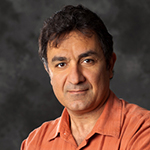
February 20, 2023
external page Professor Roger Ghanem
University of Southern California
Condition assessment of spent nuclear fuel prior to permanent storage is an important component of their life cycle assessment. Given their radioactive nature, only external inspection is possible for these systems while damage and conditions of interest are unobserved. The anatomy of containment structures for spent nuclear fuel is quite complex, consisting of a hierarchy of subsystems interconnected at a finite number of joints, thus greatly filtering wave motion and restricting the flow of information throughout this system. In this talk I will describe our effort at prognosis for these systems. Specifically, we develop a highly detailed 200M DOF finite element model. Nested dynamic reduction techniques are used to facilitate the numerical evaluation of this model. Even with such level of detail, modeling errors are still unavoidable and are represented through a combination of non-parametric models (random matrix models for stiffnesses) and parametric models (random variables for joints and fasteners). A six hundred dimensional polynomial chaos expansion (PCE), that also captures non-parametric effects is constructed using projection-pursuit basis adaptation methods. Statistical updating is then implemented to assimilate experimental dynamical measurements made on the external casing with the aim of inferring the nature and location of damage inside the containment structure. The talk will detail the nested structural dynamics construction, the adapted PCE representation, and the specialized updating techniques.
Roger Ghanem is the Gordon S. Marshall Professor of Engineering Technology and Professor in the Departments of Civil & Environmental Engineering and Aerospace & Mechanical Engineering at the University of Southern California. Prior to joining USC in 2005, he had served on the faculty of Johns Hopkins University and SUNY-Buffalo. Dr. Ghanem is a world-re-known expert and leader in stochastic analysis and stochastic computational science. He has worked for the past thirty years on scientific, mathematical and algorithmic aspects of uncertainty quantification with applications from across science and engineering. His recent work addresses challenges presented by modeling errors and complex interacting systems such as those exhibiting multiscale and multiphysics behaviors. Dr. Ghanem has co-authored over 200 journal articles related to stochastic systems and predictive science. He has supervised the research of over 20 postdoctoral associates and 30 PhD students. Dr. Ghanem has served as President of EMI, on the Executive Council of USACM, as Chair of the SIAM-SIAG on Uncertainty Quantification, and on USNCTAM, the US Committee on Theoretical and Applied. He is fellow of AAAS, SIAM, USACM, IACM, and EMI. Dr. Ghanem is the recipient of numerous awards acknowledging his research and teaching contributions. His research has been supported by NSF, ONR, AFOSR, DARPA, DOE, and a number of industries.
Parameter Sensitivity in Time-Delay Systems
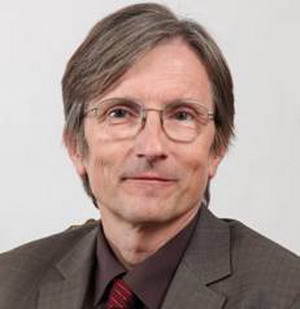
December 19, 2022
external page Professor Gabor Stepan
Budapest University of Technology and Economics
It is a rule of thumb that increasing time-delay has destabilizing effects in dynamical systems: it tends to make equilibria unstable, bifurcations subcritical, and chaos often appears in the jungle of the emerging unstable limit cycles. The lecture will discuss cases when the stability properties show ex-treme sensitivity to system parameters, especially to the time delays. These cases may seem to be mathematical curiosities, but they originate in relevant physical examples like the acceleration feed-back in the wheeled inverted pendulum, the squealing sound in public address systems, or the hard-ware-in-the-loop tests of high-speed cutting.
A Hamiltonian Demon: Circumventing the Second Law by Quantizing Energy
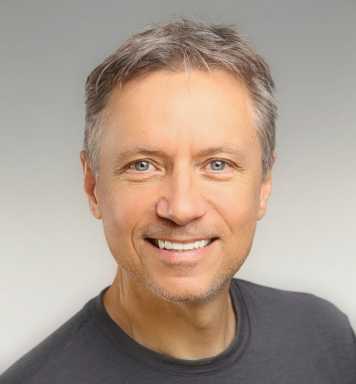
November 28, 2022
Professor Raffaello D'Andrea
Department of Mechanical and Process Engineering, ETH Zurich
In this talk I will introduce a deterministic process, henceforth referred to as a demon, for altering the equilibrium distribution of a billiards-like dynamical system. The system consists of particles whose energies are integer valued, and where all energy-exchange mechanisms preserve this quantization. As a result, time and positions are continuous, while velocities are discrete. The demon is a localized, velocity-dependent potential whose effect is to simply alter the direction of an incident particle. It is shown how the demon can steer the system away from equilibrium to create a temperature differential, a density differential, a circulation, and a large-scale oscillation. It is further shown how the system -- including the demon -- can be captured by a time-independent Hamiltonian, where the set of states whose energies are integer valued is an invariant set. In addition, given any finite time horizon, the novel behavior extends to continuous energies in a neighborhood of the invariant set. Since the set of states where energy is quantized has zero Lebesgue measure, the results are not inconsistent with statistical characterizations of the second law of thermodynamics.
The talk is based on classical results which are over 100 years old and extensive computer simulations. It should be accessible to any (motivated) student with a bachelor's degree in engineering, physics, mathematics, or computer science.
Raffaello D’Andrea is a professor at ETH Zürich and the founder/CEO of Verity, a self-flying drone systems company. He cofounded Kiva Systems, which was acquired by Amazon and rebranded as Amazon Robotics. During his time as a professor at Cornell University, he cofounded the systems engineering program and led the Cornell Robot Soccer team to four world championships. He is also a founder of RoboGlobal, an organization that introduced the world’s first Robotics and AI Exchange Traded Fund.
His work as a new media artist has been exhibited at the Venice Biennale and is part of the permanent collections of the National Gallery of Canada and France’s FRAC Centre. He is the co-creator of the Robotic Chair, a plain-looking wooden chair that falls apart and seems to defy the second law of thermodynamics by reassembling itself. He created the drone design and choreographies for Cirque du Soleil’s Paramour on Broadway and Metallica’s WorldWired tour, and was executive producer for the drone light shows in Drake’s Aubrey & the Three Migos tour, Céline Dion’s Courage tour, and Justin Bieber’s Justice tour.
In 2020 he was inducted into the National Inventors Hall of Fame and was elected to the U.S. National Academy of Engineering. His TED and research videos, with tens of millions of views, offer an inspiring view into the world of engineering, robotics, and computer science.
Unified Perspectives on Nonlinear Model Reduction
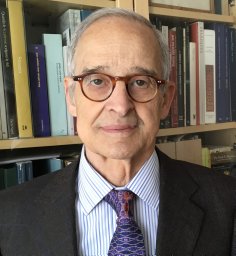
October 17, 2022
external page Professor Giuseppe Rega
Department of Structural and Geotechnical Engineering, SAPIENZA Università di Roma
The past decade has witnessed renewed interest to nonlinear model reduction, with many differently motivated techniques now available, including nonlinear normal modes (NNMs), direct multi-scale method (dMSM, full-basis), normal form (NF), spectral sub-manifolds (SSMs), rectified Galerkin method (RGM), quadratic manifold (QM), low-order elimination technique (LOE). There is thus demand for possibly unified perspectives of the nonlinear model reduction issue, aimed at better understanding the subtle connections among all reduction methods.
In this talk, the recent low-order elimination (LOE) technique using a passive pattern concept (an energy-containing feature besides the dominant mode) is first discussed, and then used to outline some unified perspectives on nonlinear model reduction, which are developed based upon two different basic problems, i.e., truncation order and truncation degree. The former refers to the common reduced dimension or number of dominant modes, while the latter refers to truncation degree of polynomials employed to approximate invariant manifold/transformation/passive pattern.
An explicit theoretical correspondence among these reduction methods is detailed, placing in particular NNMs/dMSM/NF/LOE/RGM within a unified framework in the sense of refined finite mode truncation, and leading to a coherent elucidation of distinct reduction perspective/philosophy (e.g., condensation, transformation, decomposition, elimination), which also justifies claims/observations made in the literature as regards the capability of refined reduction methods to properly correct the routine/flat Galerkin (say, single-mode) truncated model. The current correspondence especially frames the perturbation perspective within the reduction picture, and is regarded as an expanded version of the existing link between NNMs and NF built upon manifold parameterization.
Another unified perspective is drawn by focusing on various reduced-order models (ROMs) of general quadratic/cubic nonlinear structures, produced by different reduction methods with two-, three-, and four-degree truncations. It turns out that, for non-degenerate third-order dynamics, all truncations produce valid and equivalent, but seemingly different, ROMs. Through translating invariant manifolds, nonlinear transformation and perturbation terminology into low-order elimination language using passive patterns, various reduction approaches are framed within the same formulation, and finally a unified elucidation of distinct reduction methods is given in the sense of truncation degree.
Giuseppe Rega is Professor Emeritus, Sapienza University of Rome. Past Chairman of EUROMECH Nonlinear Oscillations Conference Committee and of AIMETA (Italian Association Theoretical and Applied Mechanics), is Italian Representative at IUTAM General Assembly and Member of CISM Scientific Council. Was Chairman of Sapienza Ph.D. School in Structural and Geotechnical Engineering, and of Committee of Italian Professors of Solid and Structural Mechanics.
Past Editor-in-Chief of Meccanica, has been/is Associate Editor or Advisor/Editorial Board Member of several Archival Journals. Organized many scientific events within EUROMECH, IUTAM, ASME, NNM, CISM, EURODYN and other societies. Plenary/Keynote Lecturer at a huge number of international conferences and many academic institutions.
First non-anglosaxon recipient of ASME Lyapunov Award (2017). Birthday anniversaries honored with Special Issues of Nonlinear Dynamics (60th) and Int. J. Non-Linear Mech. (70th). Published nearly 170 papers in 55 Archival Journals and 80 Edited Volumes’ Chapters. Edited 5 Books and 10 Archival Journals’ Special Issues.
Contributions provided to cable nonlinear dynamics, nonlinear oscillations, bifurcation and chaos in applied mechanics and structural dynamics, reduced-order modelling, control of oscillations and chaos, exploitation of global dynamics for engineering safety, smart materials, coupled oscillators, thermomechanical problems, through the combined use of analytical, computational, geometrical, and experimental techniques needed to detect/characterize the variety of nonlinear/complex dynamic phenomena occurring in different engineering areas. Also active in structural architecture.
Pragmatic Methods for Nonlinear Stochastic Dynamics
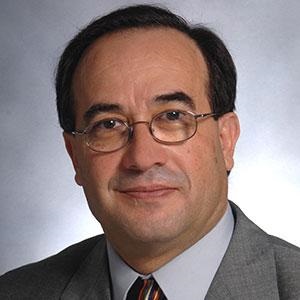
September 19, 2022
external page Professor Pol D. Spanos
Lewis B. Ryon Professor of Mechanical Engineering and of Civil Engineering, RICE University Houston
Methods of stochastic analysis which can be used effectively for critical problems of nonlinear dynamics are discussed. A brief overview of relevant concepts of stochastic variables and processes is first undertaken. Next, particular attention is focused on the method of Monte Carlo simulation, auto-regressive-moving-average (ARMA) filtering, and the concept surrogate (equivalent) system, linear or nonlinear, for response de-termination of nonlinear systems. Several examples of application are given.
Further, a recent treatment of a chronically challenging problem is presented. It pertains to the formulation of the method of statistical linearization for determining the response statistics of multi-degree-of-freedom dy-namic systems subject to combined periodic/stochastic excitations.
Finally, developing themes in the area of stochastic dynamics are outlined.
Professor Spanos is a Caltech alumnus with a Ph.D in Applied Mechanics with a minor I in Applied Mathematics and a minor II in Business Economics, as well as an MS in Civil Engineering. He also holds a 5-year diploma in Mechanical Engineering and Engineering Sciences from NTU in Athens, Greece.
His interests are in the area of dynamical systems with an emphasis on probabilistic (risk and reliabil-ity), non-linear, hysteresis, and signal-processing aspects; and its applications to mechanical-, structur-al-, aerospace-, offshore-, bio-, and materials-engineering.
He has supervised the MS theses of more than 75 students, and the Ph.D. theses of more than 55 stu-dents. His research findings have been disseminated in more than 350 papers in archival journals, technical conferences, and industrial reports.
He is Editor-in-Chief of the International Journal of Non-Linear Mechanics, and the Journal of Probabil-istic Engineering Mechanics. He is a Registered Professional Engineer (TX), and a Licensed Civ-il/Mechanical Engineer (Greece).
His work has been supported by NSF, DOE, ONR, AFOSR, NASA, and by many industrial consortia. He has received numerous awards from NSF, ASCE, AvHA, EASD, ASME, IASSAR, and Rice University (teaching prize twice). He is a Distinguished Member of ASCE, and a Distinguished Member and Gold Medalist of ASME.
He is a member of the National Academy of Engineering (USA), of the American Academy of Arts and Sciences (USA), and a foreign member of NA/NAE of Greece, India, Europe (3), Canada, China, and Russia.
Since 1988, he has held the LB Ryon Endowed Chair in Engineering at Rice University in Houston, USA.
A Comprehensive and Computionally Tractable Framework for Nonlinear, Dynamic, Multiscale Modeling Based on Model Reduction and/or Mechanics-Informed Machine Learning
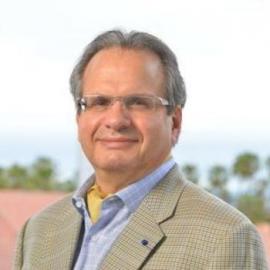
June 28, 2022
external page Professor Charbel Farhat
Vivian Church Hoff Professor of Aircraft Structures
Chairman, Department of Aeronautics and Astronautics
Director, Stanford-King Abdulaziz City of Science and Technology Center of Excellence for Aeronautics and Astronautics
Professor, Mechanical Engineering and Institute for Computational and Mathematical Engineering
A general-purpose computational homogenization framework is proposed for the nonlinear dynamic analysis of structural systems exhibiting complex microscale and/or mesoscale inhomogeneities – including those characterized by in-plane periodicity – that cannot be effectively treated by a conventional method. The proposed framework is a generalization of the “finite element squared” (or FE2) method that allows a representative volume element (RVE) at any level of the hierarchy of mechanical scales to be semi-discretized by solid elements, when the RVE at the previous level is semi-discretized by shell, plate, or membrane elements. To this end, it exploits the principle of frame invariance and reinterprets as needed the numerical solution of an RVE problem as a mapping between the right stretch tensor and the symmetric Biot stress tensor, which enables the development of a drop-in replacement for any conventional finite strain plane stress material model formulated in terms of the in-plane components of the Green-Lagrange strain tensor and the second Piola-Kirchhoff stress tensor. The proposed framework achieves computational tractability by leveraging recent advances in adaptive, in-situ, nonlinear, projection-based model order reduction; and in mechanics-informed, structure-preserving, machine learning for data-driven modeling. The mechanistic and computational aspects of the proposed framework are illustrated with several examples. Its potential for realistic applications is demonstrated with the validated, nonlinear, dynamic, multiscale, fluid-structure simulation of the supersonic inflation of the parachute system made of woven fabrics that landed in 2012 the rover Curiosity on Mars; and the validated, counterpart simulations of the parachute designs used in NASA’s 2018 ASPIRE tests – one which was selected for the Mars 2020 mission that landed in 2021 the rover Perseverance on Mars.
(Joint work with Faisal Asad, Department of Mechanical Engineering and Philip Avery, Institute for Computational and Mathematical Engineering, Stanford University)
Charbel Farhat is the Vivian Church Hoff Professor of Aircraft Structures, Chairman of the Department of Aeronautics and Astronautics, and Director of the Stanford-KACST Center of Excellence for Aeronautics and Astronautics at Stanford University. His research interests are in computational engineering sciences for the design and analysis of complex systems in aerospace, mechanical, and naval engineering. He is a Member of the National Academy of Engineering, a Member of the Royal Academy of Engineering (UK), a Doctor Honoris Causa from Ecole Centrale de Nantes, a Doctor Honoris Causa from Ecole Normale Supérieure Paris-Saclay, a designated ISI Highly Cited Author, and a Fellow of AIAA, ASME, IACM, SIAM, USACM, and WIF. He has trained more than 90 PhD and post-doctoral students. For his research on aeroelasticity, aeroacoustic scattering, CFD, dynamic data-driven systems, fluid-structure interaction, high performance computing, and model reduction, he has received many professional and academic distinctions including: the Ashley Award for Aeroelasticity from AIAA; the Spirit of St Louis Medal from ASME; the Gordon Bell Prize from IEEE; the Gauss-Newton Medal from IACM; the Grand Prize from the Japan Society for Computational Engineering Science; and the John von Neumann Medal from USACM. He was appointed on the Scientific Advisory Board of the US Air Force, selected by the US Navy recruiters as a Primary Key-Influencer, and flown by the Blue Angels.
→ Talk cancelled because of the coronavirus
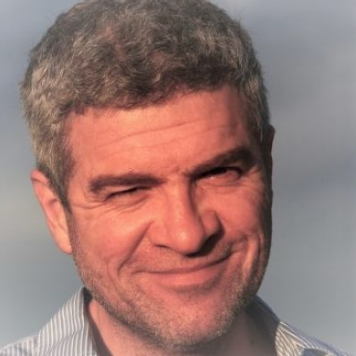
April 6, 2020
external page Professor Prof. Boris Jeremić
Department of Civil and Environmental Engineering, University of California
The Shoelace Catastrophe (or a Knotty Problem on a Shoestring)

February 17, 2020
external page Professor Oliver M. O'Reilly
Department of Mechanical Engineering, University of California at Berkeley
The accidental untying of a shoelace while walking often occurs without warning. Modeling and simulating the unraveling is an exceptionally difficult task in part because of the wide range of length scales, time scales and parameters. Finding external funding to examine the problem is arguably an even harder problem.
In this talk, we present a set of hypotheses for the series of events that lead to a shoelace knot becoming untied. First, the repeated impact of the shoe on the floor during walking serves to loosen the knot. Then, the whipping motions of the free ends of the laces caused by the leg swing produce slipping of the laces. This leads to eventual runaway untangling of the knot. As demonstrated using slow-motion video footage and a series of experiments, the failure of the knot happens in a matter of seconds, often without warning, and is catastrophic. The controlled experiments showed that increasing inertial effects of the swinging laces leads to increased rate of knot untying, that the directions of the impact and swing influence the rate of failure, and that the knot structure has a profound influence on a knot's tendency to untie under cyclic impact loading. The research was conducted over a period of three years on weekends and spare time using borrowed equipment and laboratory space.
This talk is based on a paper, coauthored with Christopher Daily-Diamond and Christine Gregg, published in the Proceedings of the Royal Society: http://bit.ly/KnotFailing that captured widespread media attention.
Oliver M. O’Reilly is a professor in the Department of Mechanical Engineering at the University of California at Berkeley. His research and teaching feature a wide range of problems in the dynamics of mechanical systems. He received his B.E. in Mechanical Engineering from the National University of Ireland, Galway (NUIG). Subsequently, he received his M.S. and Ph.D. degrees in Theoretical and Applied Mechanics from Cornell University. He was a postdoctoral researcher at ETH-Zürich under Prof. J. Dual from 1990-1992. O’Reilly has received multiple teaching awards, including the Distinguished Teaching Award from U.C. Berkeley, published over 90 archival journal articles, written multiple textbooks and is a co-inventor on two patents. His latest book, coauthored with Alyssa Novelia and Khalid Jawed is a Primer on the Kinematics of Discrete Elastic Rods (Springer, 2018).
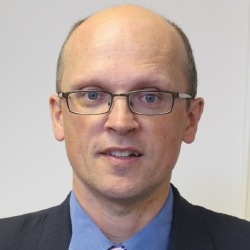
INERTER-BASED DEVICES FOR VIBRATION MITIGATION
November 11, 2019
Professor David J. Wagg
Department of Mechanical Engineering, University of Sheffield

THE MECHANICS AND DYNAMICS OF SINGLE-MANIFOLD STRUCTURES
October 14, 2019
Professor Michael D. Todd
Department of Structural Engineering, University of California San Diego
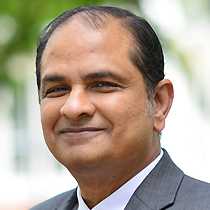
DATA-DRIVEN NONLINEAR DYNAMICS
September 16, 2019
Professor Balakumar Balachandran
Department Chair and Minta Martin Professor, Department of Mechanical Engineering, University of Maryland
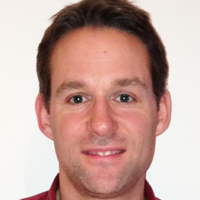
Dynamic Vibration Absorbers: Revisiting Classical Results and Introducing New Tuning Strategies
June 3, 2019
Professor Gaëtan Kerschen
Department of Aerospace and Mechanical Engineering, University of Liege
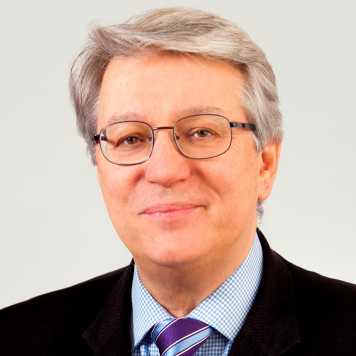
SEISMIC BEHAVIOR OF HARBOR GRAVITY QUAY WALLS
May 13, 2019
Professor George Gazetas
School of Civil Engineering, National Technical University of Athens
Download Abstract / Bio (PDF, 658 KB) external page Website
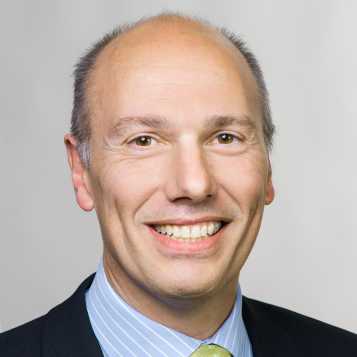
Biped Walking - a challenge for Dynamics and Control
April 9, 2019
Professor Daniel J. Rixen
Chair of Applied Mechanics, Technical University Munich
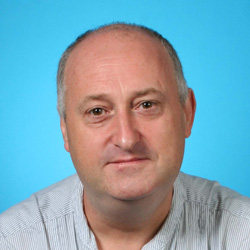
On digital twins, mirrors and virtualisations
March 11, 2019
Professor Keith Worden
Department of Mechanical Engineering, The University of Sheffield

Nonlinear dynamics inspired control
December 10, 2018
Professor Walter Lacarbonara
Department of Civil Engineering , Università La Sapienza Roma
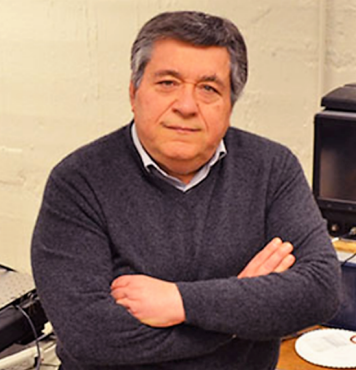
Passive Energy Management in Dynamics and Acoustics Through Strong Nonlinearity, Asymmetry and Internal Scale Hierarchy
November 12, 2018
Professor Alexander F Vakakis
Grayce Wicall Gauthier Professor, University of Illinois
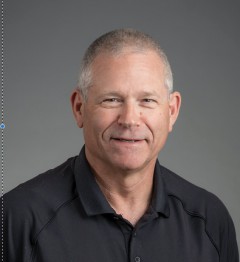
The interplay of nonlinearity and noise in tiny resonators
October 8, 2018
Professor Steven Shaw
Harris Professor of Mechanical and Civil Engineering, Florida Institute of Technology
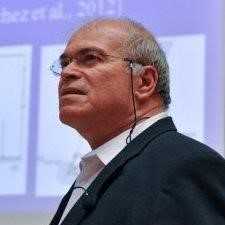
Model-based stabilization of self-excited fluid-structure interaction systems in uniform laminar flow
September 10, 2018
Professor Oded Gottlieb
Henri Garih Professor of Mechanical Engineering, Technion - Israel Institute of Technology, Haifa, Israel
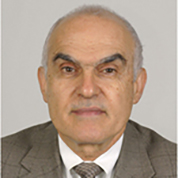
Some Approaches for the Modeling and Monitoring of Complex Nonlinear Systems
May 14, 2018
Professor Sami F. Masri
Viterbi School of Engineering, University of Southern California, Los Angeles, California, USA